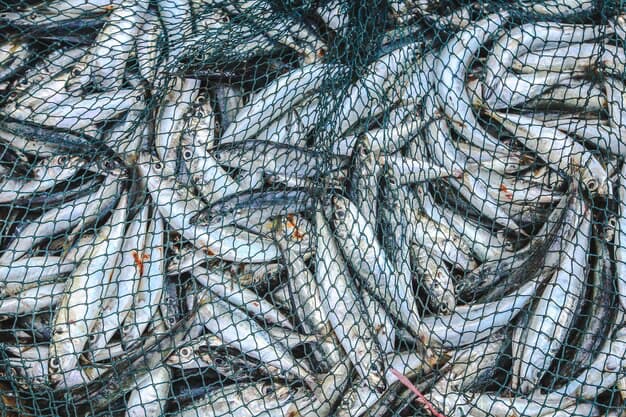The China Sea is a vital gateway to the Pacific Ocean, with a significant impact on global geopolitics, ecology, and economy. It consists of the East China Sea and the South China Sea, which possess distinct marine ecosystems and have been a focal point for maritime disagreements. This piece will explore the features of the China Seas, their ecological significance, and give an outline of the territorial disputes in the region.
The East China Sea
The East China Sea is a body of water located between China, Japan, Korea, and Taiwan, covering an area of approximately 482,000 square miles (1,249,00 square kilometers). It is relatively shallow, with an average depth of 1,145 feet and a maximum depth of 8,912 feet, and is mostly made up of the Okinawa Trench. Its coordinates are 30.3953° N, 125.9152° E. As a marginal sea, it is partially separated from the open ocean by an island arc or land ridge, making it an important and distinct part of the Pacific Ocean.
Characteristics of the East China Sea
The East China Sea, known for its distinct geographical features, plays a crucial role as a maritime gateway for the countries surrounding it. Here are some notable characteristics of this region:
| Characteristics | Details |
|---|---|
| Size | 482,000 square miles |
| Average Depth | 1,145 feet |
| Maximum Depth | 8,912 feet |
| Coordinates | 30.3953° N, 125.9152° E |
| Geographical Feature | Mostly comprised of the Okinawa Trench |
The strategic positioning of the East China Sea has made it a significant area of interest for geopolitical matters and territorial disputes among the neighboring nations.
Geopolitical Significance
Due to its close proximity to major economic powers like China and Japan, the East China Sea holds significant geopolitical significance. It serves as a crucial maritime pathway for trade, linking East Asia to the rest of the globe. Furthermore, the presence of valuable natural resources in the area adds to the competition among the countries that border the sea.
The intricate network of territorial claims and conflicts in the East China Sea has resulted in heightened tensions, affecting regional stability and international relations. Efforts to address these disputes have involved diplomatic negotiations, legal frameworks, and multilateral discussions, highlighting the complex nature of the challenges faced in this region.
Economic Importance
The East China Sea plays a vital role as a fishing hub, providing livelihoods for millions of people in neighboring nations. Its abundant marine resources are a key contributor to the region’s economic success, making it a valuable asset for coastal communities. Additionally, its strategic position allows for efficient maritime transportation, facilitating trade and economic interactions between East Asian countries and the global market.
The economic importance of the East China Sea highlights the importance of implementing sustainable management methods to safeguard its resources and support the prosperity of the communities that rely on them in the long run.

The South China Sea
The South China Sea, which is a crucial component of the China Seas, is surrounded by multiple nations such as China, Vietnam, Malaysia, Brunei, the Philippines, and Taiwan. This partially enclosed body of water spans approximately 1.4 million square miles and is renowned for its intricate political landscape and varied marine habitats.
Characteristics of the South China Sea
The South China Sea is a significant player in both regional and global affairs due to its vast size and diverse landscape. Here are some notable characteristics of this area:
| Characteristics | Details |
|---|---|
| Size | 1.4 million square miles |
| Average Depth | Varies across different basins |
| Maximum Depth | Approximately 16,457 feet |
| Coordinates | 10° N to 20° N, 110° E to 120° E |
| Geographical Feature | Comprises numerous small islands and reefs |
The intricate geography and extensive maritime boundaries of the South China Sea have contributed to the complex network of territorial disputes and competing claims among neighboring countries.
Ecological Diversity
The South China Sea is well-known for its abundant and diverse range of marine life, including various species, coral reefs, and ecosystems. This area provides a variety of habitats, from shallow coastal regions to deep-sea environments, which support a complex and interconnected network of living organisms.
- Biodiversity: The South China Sea is home to an impressive array of marine creatures, such as fish, invertebrates, marine mammals, and seabirds. This wide range of species helps maintain the ecological strength of the area, playing a vital role in supporting the well-being and efficiency of the marine ecosystems;
- Coral Reefs: The ocean contains vast coral reef networks that serve as crucial habitats for a variety of marine creatures. These lively and ecologically important reefs not only promote biodiversity, but also provide valuable ecosystem benefits, including safeguarding coastlines and supporting fisheries;
- Fisheries and Feeding Grounds: The South China Sea is a crucial provider of fisheries resources, playing a significant role in the livelihoods and food security of millions of individuals in the area. The sea’s fertile waters and plentiful feeding areas are critical for maintaining the marine ecosystem and supporting the commercial fishing sector;
- Migration Routes: The interconnected system of migration routes in the sea enables the transportation of different types of creatures, such as migratory fish, marine mammals, and seabirds. These pathways are crucial for the survival and breeding success of many marine species, emphasizing the interdependence of the South China Sea’s ecosystems;
- Ecosystem Support: The various habitats found in the South China Sea offer essential benefits such as nutrient recycling, carbon storage, and shelter for marine life. These ecological roles play a crucial role in maintaining the overall well-being and adaptability of the ocean environment, highlighting the importance of safeguarding its natural equilibrium.
Threats to the South China Sea Ecosystem
Although the South China Sea is known for its abundant ecological resources, it is also vulnerable to various environmental dangers such as excessive fishing, deterioration of habitats, contamination, and the effects of climate change. These factors present significant obstacles in preserving and effectively managing the sea’s diverse ecosystems, requiring united actions to tackle these concerns.
- Overfishing and Habitat Degradation: Uncontrolled and unsustainable fishing methods, along with the destruction of habitats, have resulted in a decrease in fish populations and the deterioration of vital marine environments, jeopardizing the overall sustainability of the ocean’s ecosystems;
- Pollution and Marine Debris: The South China Sea is vulnerable to contamination from different origins, such as industrial practices, shipping activities, and coastal growth. The presence of pollution and debris in the ocean poses significant risks to marine creatures, their habitats, and the overall water condition, making it crucial to implement effective measures to address these issues;
- Climate Change Impacts: The ocean is at risk from the impacts of climate change, such as increasing water temperatures, acidification, and severe weather events. These alterations can disturb marine habitats, change the distribution of species, and worsen the susceptibility of coastal communities to environmental hazards.
Conservation Efforts in the South China Sea
It is imperative to make efforts towards preserving the ecological balance of the South China Sea in order to protect its diverse range of species and promote responsible utilization of its resources. Working together on projects such as establishing marine protected areas, implementing sustainable fishing practices, controlling pollution, and adapting to climate change are vital for addressing the environmental issues that the area is facing.
Biodiversity
The South China Sea is home to an incredible array of marine creatures, such as fish, invertebrates, marine mammals, and seabirds. This diverse mix of species is vital for maintaining the ecological balance of the area, playing a crucial role in supporting the well-being and productivity of the marine ecosystems.
Coral Reefs
The ocean contains vast coral reef systems that serve as crucial homes for many marine creatures. These lively and ecologically important reefs not only promote diversity but also provide valuable services to the ecosystem, such as safeguarding coastlines and supporting fisheries.
Fisheries and Feeding Grounds
The South China Sea is a crucial provider of fish resources, playing a significant role in supporting the livelihoods and food security of millions of individuals in the area. The sea’s fertile waters and plentiful feeding areas are vital for maintaining the marine ecosystem and the profitability of the fishing sector.
Migration Routes
The interconnected system of migration routes in the ocean allows for the movement of a variety of species, such as migratory fish, marine mammals, and seabirds. These pathways are essential for the survival and successful reproduction of many marine creatures, demonstrating the interdependence of the South China Sea’s ecosystems.
Ecosystem Support
The China Sea is home to a variety of ecosystems that provide valuable services such as nutrient cycling, carbon storage, and habitat support. These ecological functions play a crucial role in maintaining the overall health and resilience of the marine environment, highlighting the importance of preserving its natural balance.

Threats to the China Sea Ecosystem
Despite its rich biodiversity, the China Sea is facing numerous environmental threats, including overfishing, degradation of habitats, pollution, and the impacts of climate change. These challenges pose significant obstacles to the conservation and sustainable management of the sea’s diverse ecosystems, requiring concerted efforts to address them.
Overfishing and Habitat Degradation
Unregulated and unsustainable fishing practices, along with the destruction of critical marine habitats, have led to declines in fish populations and the deterioration of important ecosystems, jeopardizing the long-term sustainability of the sea.
Pollution and Marine Debris
The China Sea is at risk of pollution from various sources, such as industrial activities, shipping operations, and coastal development. This pollution and accumulation of marine debris can have severe consequences for marine life, habitats, and water quality, making it crucial to implement effective measures to mitigate these impacts.
Climate Change Impacts
The China Sea is particularly vulnerable to the effects of climate change, including rising sea temperatures, ocean acidification, and extreme weather events. These changes can disrupt marine ecosystems, alter the distribution of species, and increase the vulnerability of coastal communities to environmental risks.
Conclusion
The China Sea, which includes the East China Sea and the South China Sea, serves as an important gateway to the Pacific Ocean with significant ecological, social, and economic value. Its varied marine ecosystems and abundant biodiversity highlight its crucial role in preserving the well-being and productivity of the Pacific Ocean. Nevertheless, the sea is confronted with numerous environmental challenges such as excessive fishing, deterioration of habitats, pollution, and the effects of climate change, which call for immediate conservation measures and sustainable management strategies.



